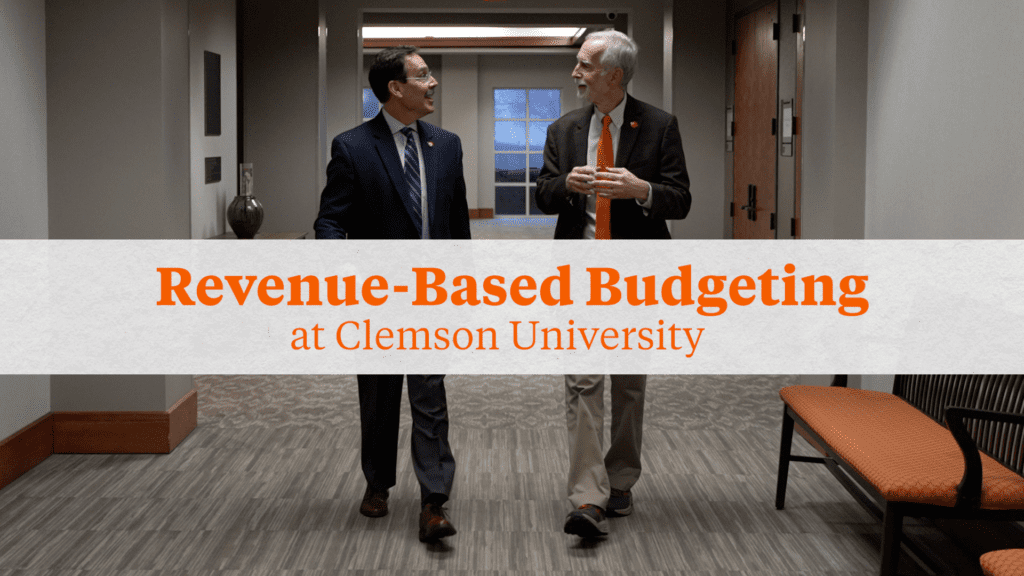Clemson University has launched a website introducing the University’s new budget model, Revenue-Based Budgeting (RBB), and why now is an ideal time to shift towards a new approach. The budgeting model is incentive-based and allows for gradual changes over time to create predictable and meaningful impacts.
Revenue-based budgeting ensures transparency and streamlines college and division-level decision-making while drawing from existing successful practices to align budget authority with accountability and responsibility.
The website includes three main educational components to explain this exciting shift — Revenue-Based Budgeting at Clemson, Governance and Implementation and What is RBB? The site also includes an overview of the implementation phases and RBB’s defining characteristics. Additionally, it contains a special welcome video featuring Executive Vice President for Academic Affairs and Provost Bob Jones and Executive Vice President for Finance and Operations and Chief Operating Officer Tony Wagner.
Tony and I are committed to supporting this transition, which allows us to achieve the bold goals outlined in Clemson Elevate – delivering the No. 1 student experience, doubling research by 2035 and transforming lives across our state and beyond. Financial stewardship is key, and success depends on effectively managing our costs and smart revenue growth,” said Jones.
Timeline
The University plans to go live with RBB in fiscal year 2027 (July 2026), which differs from the original projections. This allows for adjustments and engagement with campus to support long-term model adoption and alignment with Clemson’s finance and human resources ERP (Enterprise Resource Planning) implementation.
According to Wagner, transitioning to a new budget model at Clemson will take time.
“Provost Jones and I, along with leadership from across campus, are committed to doing this right—not fast. Completing the design phase was the first step in this process, and we are now in the second phase of the transition to focus on testing and refining the model framework, ensuring engagement at all levels and between key stakeholders across campus.”


